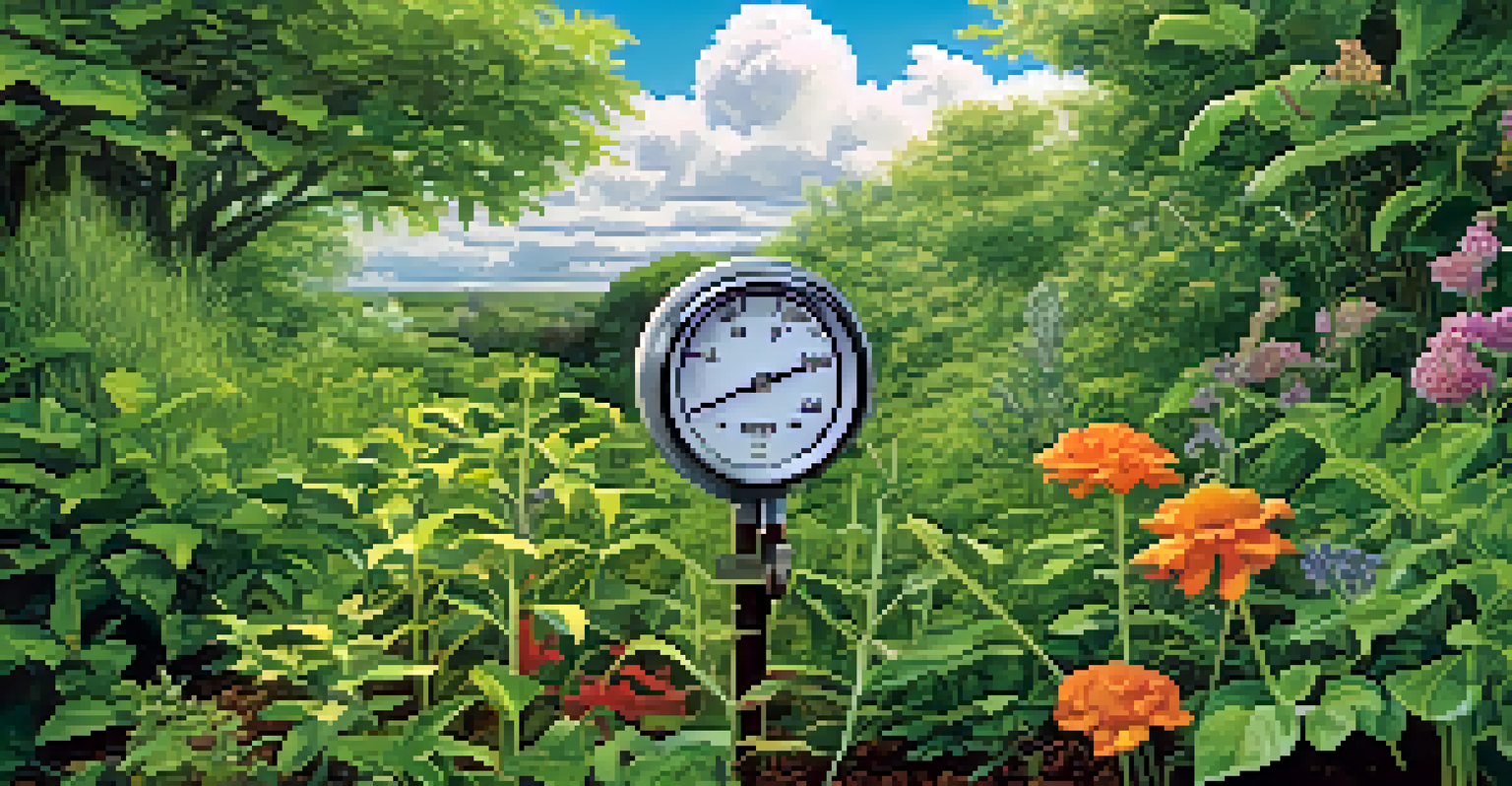The Influence of Climate Change on Invasive Plant Species Growth

Understanding Invasive Plant Species and Their Impact
Invasive plant species are non-native plants that thrive in new environments, often outcompeting local flora. These plants can disrupt ecosystems, diminish biodiversity, and affect agriculture. Their growth is often accelerated by favorable conditions created by climate change.
Invasive species are one of the greatest threats to biodiversity, and climate change is making the problem worse.
When we think of invasives, we might picture species like kudzu or purple loosestrife, which can overrun landscapes. They often spread quickly due to lack of natural predators in their new habitat. This aggressive growth can lead to a cascade of negative effects on local wildlife and plant communities.
Invasive species pose a significant threat to natural ecosystems, making it crucial to understand the factors that contribute to their spread. Climate change plays a pivotal role in creating conditions that favor their growth, which can lead to devastating consequences for native species.
The Role of Temperature in Plant Growth
Temperature is a critical factor influencing the growth of all plants, including invasive species. As global temperatures rise due to climate change, many invasive plants find themselves in environments that are more conducive to their growth and reproduction. For instance, warmer temperatures can extend growing seasons, allowing these species to flourish.

Invasive plants often adapt more quickly to changing temperatures compared to native species. This adaptability means they can thrive in areas that become warmer, while local plants may struggle to survive. Consequently, invasive species can take over and dominate these habitats, further pushing out native flora.
Invasive Plants Disrupt Ecosystems
Invasive species outcompete native plants, threatening biodiversity and altering local ecosystems.
Moreover, increased temperatures can alter soil chemistry and moisture levels, creating an even more favorable environment for invasives. This cycle of change can lead to a significant shift in plant community dynamics, making it essential to monitor and manage invasive species effectively.
The Impact of Increased CO2 Levels
Rising levels of carbon dioxide (CO2) in the atmosphere are another consequence of climate change that can benefit invasive plant species. CO2 is a vital component of photosynthesis, and many invasive plants are more efficient at utilizing it than their native counterparts. This efficiency allows them to grow faster and outcompete local plants for resources.
The only way to stop invasive species is to prevent them from getting established in the first place.
For example, studies have shown that invasive grasses can flourish in high-CO2 environments, often leading to more robust growth than native grass species. The resulting dominance of these invasive plants can alter the structure of ecosystems, making it harder for native species to thrive.
Additionally, the increase in CO2 can lead to changes in plant interactions, such as competition for light and nutrients. This shift can have long-lasting effects on ecosystem health and resilience, underlining the importance of understanding the implications of rising CO2 levels.
Changes in Precipitation Patterns and Invasive Growth
Climate change is causing shifts in precipitation patterns, leading to more intense storms and prolonged droughts. These changes can create conditions that favor invasive plant species, which often have different water needs compared to native plants. For instance, some invasive species are more drought-tolerant and can thrive when water becomes scarce.
When heavy rains occur, invasive plants can quickly take advantage of the resulting nutrient runoff, leading to explosive growth. Conversely, during droughts, these plants may outlast native species that are less resilient to water stress. This adaptability allows them to further establish themselves in new areas.
Climate Change Fuels Invasive Growth
Rising temperatures and changing precipitation patterns create favorable conditions for invasive species to thrive.
The interplay between altered precipitation and invasive species growth can complicate restoration efforts aimed at supporting native ecosystems. Understanding these dynamics is crucial for developing effective management strategies to combat invasives in a changing climate.
Biological Interactions Influenced by Climate Change
Climate change alters not just the environment but also the biological interactions within ecosystems. Changes in climate can affect pollinators, herbivores, and other organisms that interact with both invasive and native plant species. These shifts can have profound implications for which plants thrive and which struggle.
For example, if a native pollinator becomes less active due to temperature changes, invasive plants that rely on similar pollinators may take advantage, leading to their increased reproduction. On the other hand, if herbivores that typically feed on invasive plants decline, it can result in unchecked growth of those invasives.
These complex relationships highlight the importance of considering ecological interactions when assessing the impact of climate change on invasive species. By understanding these dynamics, we can better predict which species might thrive and how ecosystems may shift in the future.
Mitigating the Impact of Invasive Species
Addressing the issue of invasive species in the context of climate change requires a multifaceted approach. Land managers and conservationists must prioritize early detection and rapid response to new invasives before they establish themselves. Education and awareness are critical in helping communities recognize and report invasive species.
Restoration of native habitats is another effective strategy. By enhancing the resilience of native plant communities, we can create environments that are less favorable to invasive species. This can involve planting native species that are better adapted to changing climate conditions.
Collaboration is Key to Management
Effective management of invasive species in a changing climate requires cooperation among communities, researchers, and policymakers.
In addition to these strategies, collaboration among researchers, policymakers, and local communities is vital for effective management. Sharing knowledge and resources can empower communities to tackle invasive species challenges collectively, helping to protect native ecosystems in the long run.
The Future of Invasive Species in a Changing Climate
As climate change continues to unfold, the future of invasive plant species remains uncertain but concerning. We may see a shift in the types of invasive species that dominate, as some may thrive under new climatic conditions while others may decline. Monitoring these changes is essential for understanding the evolving landscape of our ecosystems.
Furthermore, the movement of invasive species is likely to increase as global temperatures rise and weather patterns shift. This means that areas previously unaffected may soon experience invasions, leading to new ecological challenges. The need for proactive management and research will be more critical than ever.

Ultimately, the relationship between climate change and invasive species highlights the interconnectedness of our ecosystems. By addressing climate change and its impacts on biodiversity, we can work towards healthier ecosystems that are resilient to both invasive species and environmental changes.